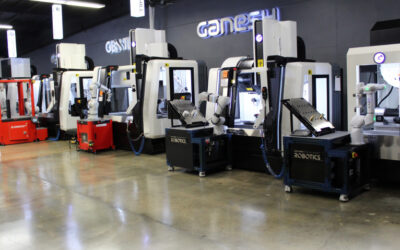Since electronics manufacturing was first sent overseas to places like China and India almost thirty years ago, the subject of bringing these jobs back to the United States and Canada has been the subject of considerable debate. Reshoring is bringing a business operation which was moved overseas back to its original country, namely the U.S. and Canada. While some believe it is simply too late to reshore from places where the cost of manufacturing is cheaper, others remain optimistic.
~
The Reshoring Index has been tracked by American global management consulting firm A.T. Kearney since 2013 and follows the rate of American imports versus the gross output of U.S. manufacturing. While there has been much improvement in U.S. manufacturing since 2008’s worldwide economic downturn, Asian imports have grown at an even faster rate.
From dog toys to t-shirts, many of the items we purchase regularly are not made in the U.S. but in places like Vietnam and China, where production is considerably cheaper. The factors behind the global supply chain are many and complex, and the economic benefits of having consumer products made overseas, makes sense. Electronic devices, however, are viewed differently from many other items. Electronics require much more technological innovation than other products and are optimal for reshoring.
While the number of North American electronics manufacturers coming back is not exactly overwhelming, it is happening to a limited extent. Reshoring reached a five-year high in 2016 following the presidential election campaign’s focus on American manufacturing. However, according to A.T. Kearney’s most recent research (Reshoring Index, July 2018), the index has since dropped by 27 basis points.
“Since 2013, when A.T. Kearney first started studying reshoring as a phenomenon, imports of manufactured goods from the 14 largest low-cost countries have increased by $118 billion, or 19 percent, while US manufacturing gross output has grown by only $81 billion, or 1 percent,” states the report.
There are several factors leading U.S. and Canadian manufacturers away from reshoring, including domestic labour shortages, the lower costs of overseas operations, and the need to recover investment made in those manufacturing facilities. However, there is hope for reshoring electronics.
The benefits of reshoring are many, ranging from ethical considerations to a more controlled supply chain and reduced turnaround times. Job creation at home would be the primary gain.
America was a juggernaut in the years following the end of World War II. Its factories – unlike those in Germany and Japan – were not destroyed during the war, and the U.S. was responsible for approximately forty percent of the world’s manufactured goods for years. Over time, however, much of this manufacturing went to other countries where taxes and the prices of raw materials, materials, and energy costs were significantly lower.
However, with rising shipping costs, the United States is becoming increasingly attractive to manufacturers once again. While many sectors will benefit, electronics, in particular, will take the lead as technology advances and the use of automation, robotics, and 3D printing increases and becomes more affordable.
Although electronic imports from China to the United States declined by over $7 billion in 2016 and rose again in 2017, experts predict that the ongoing tariff battle between the two nations will play a key role. A recently-announced twenty-five percent tariff will be placed by the U.S. on over eight hundred categories of Chinese-made goods – including raw materials used in electronics, semiconductors, LEDs, processors, controllers, and other hardware. If this continues, it will increase costs of manufacturing in North America, as companies will have no immediate options other than to pass on the costs to the consumer.
This may also, however, compel American companies to seek places like Europe for other sources of electronic components, and in time, manufacture more of the capacitors, memory cards, and other items in the U.S. While this would undoubtedly be a slow process, it has many advantages, including quality control which is often an issue in the world of electronics. It would also dramatically shorten lead times with items taking just days to arrive, instead of weeks or months. There would be improved communication and less need for oversight by American quality control specialists working in China or India, for example.
And then, there is the issue of worker treatment. Many of us have read stories about the sometimes atrocious working conditions overseas. Long hours, sleep deprivation, and time away from family are just a few of the consequences these employees suffer so we can purchase everything from smartphones to televisions and electric toothbrushes made overseas. Exposés in the form of documentaries, books, and newspaper and magazine articles have revealed overcrowded worker dormitories, outrageous overtime up to one hundred hours a month, low wages, improper training, and little if any regard for the safety and well-being of employees.
The issue is so serious that the New York-based organization, China Labor Watch, conducted a nine-month-long investigation into the severe working conditions at the Hengyang Foxconn plant in Hunan province, which makes e-readers and smart speakers. The subsequent ninety-four-page report about Foxconn, the world’s biggest contract electronics manufacturer and employer of over a million men and women, found workers were illegally underpaid, and were paid the same amount for regular and overtime hours, with some working two weeks straight without a break.
While the subject of reshoring electronics to the United States has its share of dissenters, it is possible. Currency fluctuations in China and India and the increased cost of manufacturing, transportation, and other hidden factors in the total cost of ownership are factors in favour of reshoring.
America’s gross domestic product (GDP) was recently upgraded from 4.1 percent to 4.2 percent, and combined with national pride and an eighteen-year high in consumer confidence and projected third-quarter growth of 4.6 percent are all possible indicators of the return of electronics manufacturing to U.S. shores.













